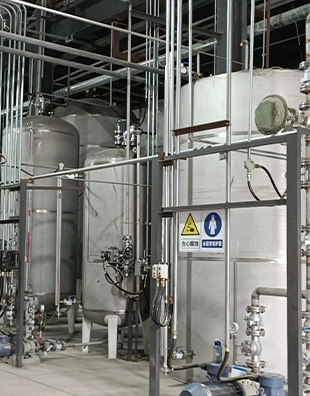pam flocculant
Understanding PAM Flocculants Key to Efficient Water Treatment
Polyacrylamide (PAM) flocculants have gained significant traction in various industrial applications, particularly in water treatment processes. These water-soluble polymers are renowned for their ability to enhance solid-liquid separation and facilitate the removal of suspended particles from water. This article delves into the characteristics, applications, and advantages of PAM flocculants, shedding light on their pivotal role in promoting clean water environments.
What are PAM Flocculants?
Polyacrylamide is a synthetic polymer that forms when acrylamide monomers are polymerized. PAM can be produced in several forms, including anionic, cationic, and nonionic, depending on the ion charge of the polymer chain. The unique structure of PAM allows it to interact with suspended particles in water, promoting agglomeration or flocculation. By bridging these particles together, PAM facilitates the formation of larger aggregates (flocs) that can be easily removed from water, leading to a clearer and purer effluent.
Applications of PAM Flocculants
PAM flocculants are extensively utilized across various industries, including
1. Municipal Water Treatment PAM is commonly used in municipal water treatment facilities to clarify drinking water, ensuring it meets safety standards. By aiding in the removal of sediments, organic matter, and other contaminants, PAM plays a critical role in producing clean water for communities.
2. Wastewater Treatment In industrial wastewater treatment processes, PAM flocculants help in effectively separating solids from liquid waste. This is particularly crucial in industries such as mining, oil and gas, and food processing, where high volumes of wastewater are generated.
3. Sludge Dewatering PAM is used in sludge treatment to improve the dewatering process. By binding the fine particles in the sludge, it accelerates the removal of excess water, resulting in drier cake and reducing disposal costs.
4. Papermaking In the paper industry, PAM functions as a retention aid, helping to retain fine fibers and fillers during the papermaking process. This not only improves the quality of the paper but also enhances productivity by minimizing waste.
pam flocculant

5. Mining Operations In the mining sector, PAM flocculants are used in the flotation process to enhance the separation of ores. They facilitate the settling of fine particles, enabling more efficient recovery of valuable minerals.
Advantages of PAM Flocculants
The popularity of PAM flocculants can be attributed to several advantages
- Efficiency PAM flocculants are highly effective in promoting flocculation, even at low dosages. This efficiency translates to lower chemical costs and reduced environmental impact.
- Versatility With various forms available, PAM can be tailored to meet specific needs depending on the characteristics of the water being treated. This adaptability makes it suitable for diverse applications across different industries.
- Improved Filtration The use of PAM in water treatment leads to enhanced filtration rates. Larger flocs formed can be easily removed through sedimentation or filtration processes, resulting in clearer water effluent.
- Environmental Benefits By facilitating the removal of pollutants from water, PAM flocculants contribute to environmental sustainability. Clean water not only supports aquatic life but also promotes health and well-being in communities.
- Cost-Effectiveness The ability of PAM to improve solid-liquid separation reduces the overall treatment time and costs associated with post-treatment processes such as disposal and further processing.
Conclusion
PAM flocculants serve as an indispensable tool in the quest for efficient water treatment solutions. Their versatile applications and numerous benefits render them crucial in municipal and industrial settings alike. As the demand for clean water continues to grow, the role of PAM flocculants is set to become increasingly significant, offering sustainable and effective methods for managing water resources. Investing in PAM technology not only enhances water treatment processes but also contributes to a greener, more sustainable future.
-
lk-319-special-scale-and-corrosion-inhibitor-for-steel-plants-advanced-solutions-for-industrial-water-systemsNewsAug.22,2025
-
flocculant-water-treatment-essential-chemical-solutions-for-purification-processesNewsAug.22,2025
-
isothiazolinones-versatile-microbial-control-agents-for-industrial-and-consumer-applicationsNewsAug.22,2025
-
scale-inhibitor-key-solutions-for-water-system-scale-preventionNewsAug.22,2025
-
organophosphonates-versatile-scale-inhibitors-for-industrial-water-systemsNewsAug.22,2025
-
scale-and-corrosion-inhibitor-essential-chemical-solutions-for-water-system-maintenanceNewsAug.22,2025





